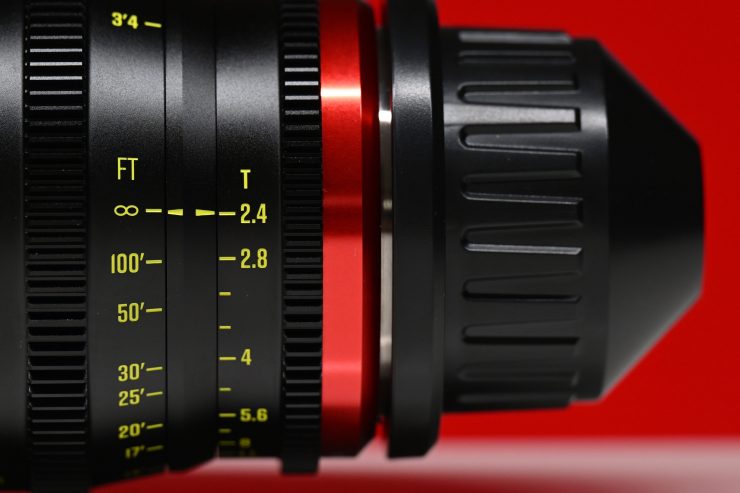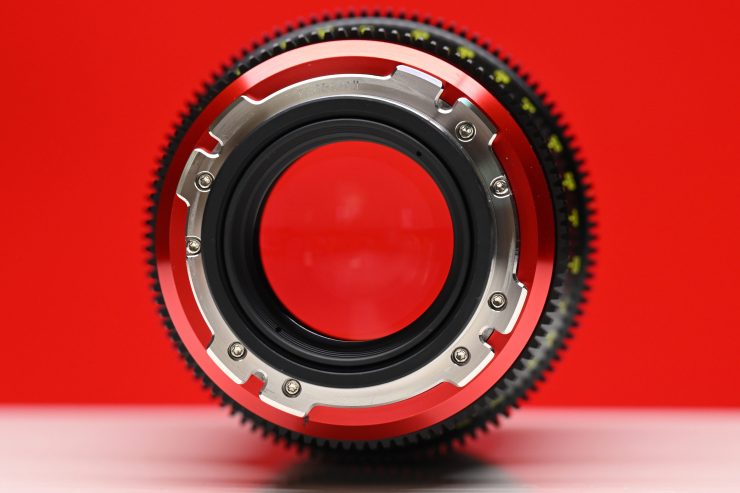
Meike recently announced its new 135mm T2.4 FF Cine Lens. The 135mm now joins the 16mm T2.5, 24mm T2.1, 35mm T2.1, 50mm T2.1, 85mm T2.1, and 105mm T2.1 lenses in the series. I have previously reviewed both the 35mm T2.1, 85mm T2.1 and 105mm T2.1 on the site.
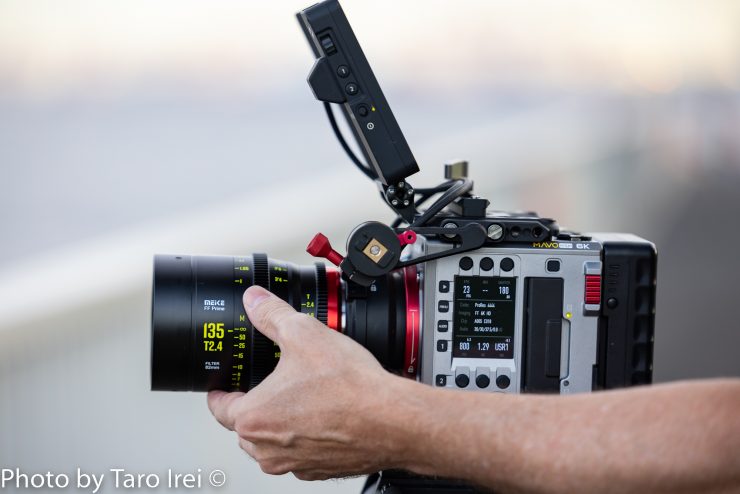
Meike now has 7 lenses in the series, ranging from 16mm to 135mm. This lets shooters build a versatile set without breaking the bank.
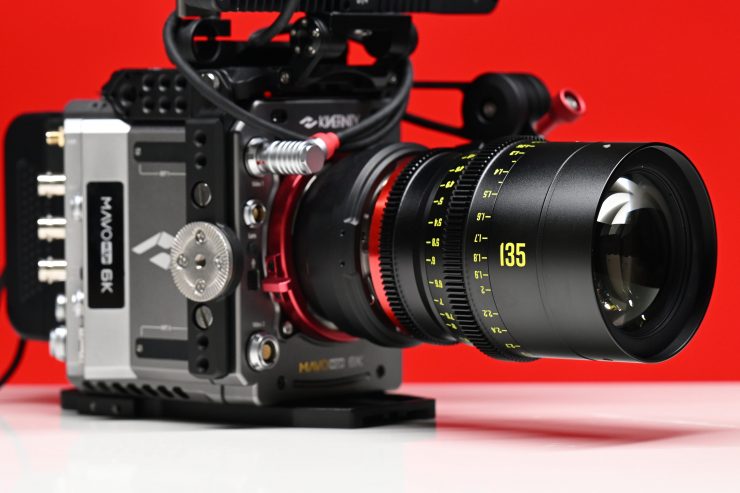
The 135mm T2.4 covers full-frame and larger-sized sensors. It is available in either PL, Canon EF, Canon R, Sony E, and Panasonic L mounts.
Who is Meike?
The story behind Meike is a little long and complicated and if you need more information check out this article by Matt Duclos.
The optical and mechanical design of the Meike primes appears to bear a striking resemblance to that of the original Veydra lenses, but there are a few key differences. The Meike lenses are claimed to be optically and mechanically better.
Concept
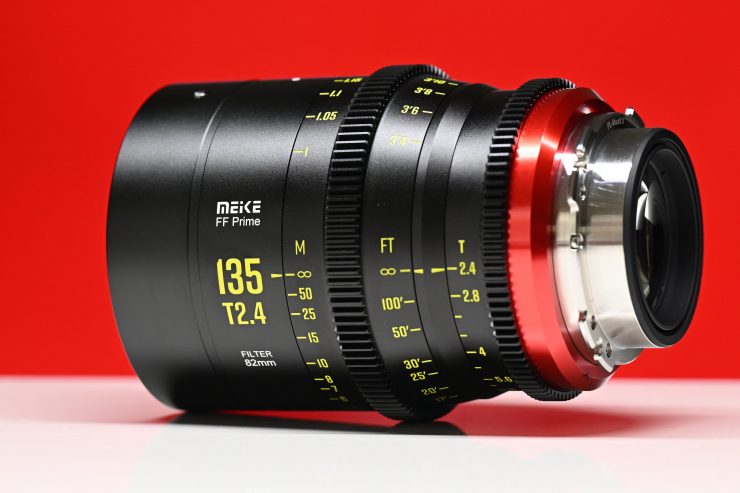
Just like all of the other lenses in the series, the 135mm T2.4 is being touted as an affordable, compact-sized, full-frame cine prime lens. The Meike lenses are a good option if you are thinking about getting a dedicated cine prime lens set, but you don’t have a lot of money to spend. In a lot of ways, lenses like these offer cine-style mechanics at the price point of a normal stills lens. A lot of these relatively new lens manufacturers such as Meike and DZOFilm have made quality cine lenses available to the masses.
As I have already mentioned it will cover full frame-sized sensors. The actual image circle coverage is 45mm.
Is this lens actually new?
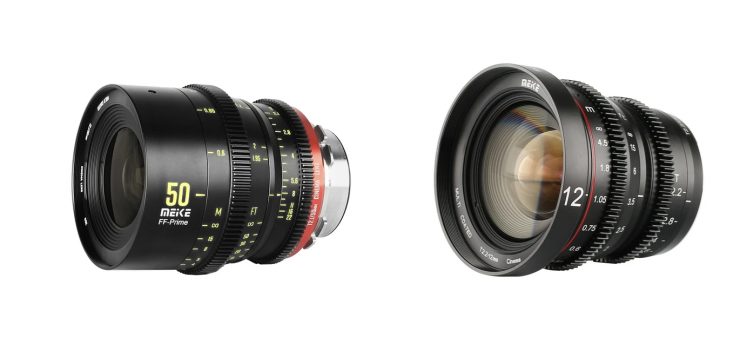
Meike already makes cinema prime lenses for M4/3, APS-C, and full-frame sized sensors. Lenses are available in Sony E-Mount, Fujifilm X-Mount, and M4/3 mount.
This new series is slightly different from the existing APS-C coverage lenses they already make. In saying that, there are still a lot of similarities between this new lens and some of the existing models.
Size & Weight
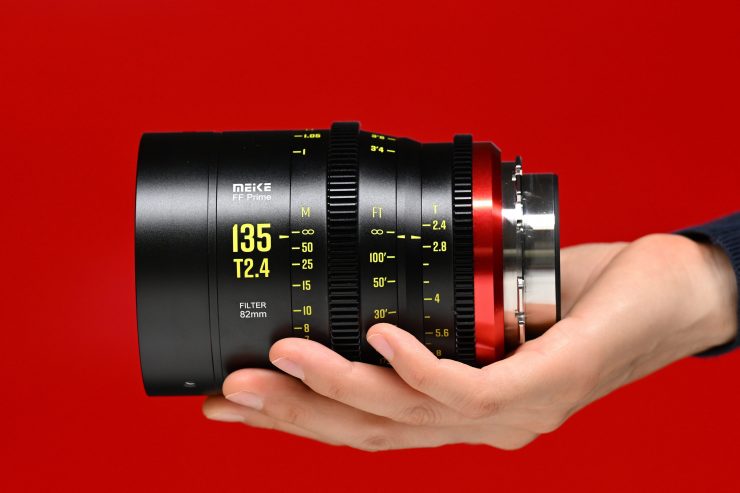
The 135mm T2.4 tips the scales at approx. It weighs in at 1.12kg / 2.65 lbs in PL and Canon EF mount. This is a reasonable amount of weight for a small lens, but it is still more than acceptable for a full frame lens with this focal length and T-stop.
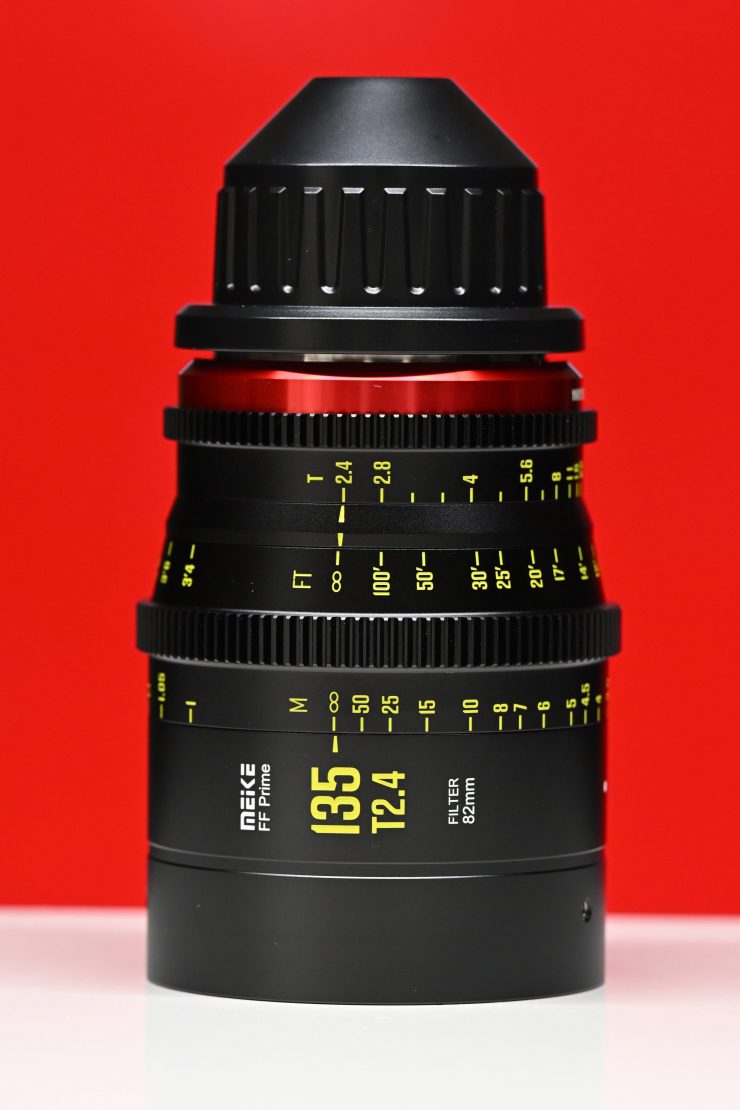
The PL-mount version is 102.4mm (4.03″) long and the Canon EF mount version is 110.5mm (4.35″) long.
Build Quality
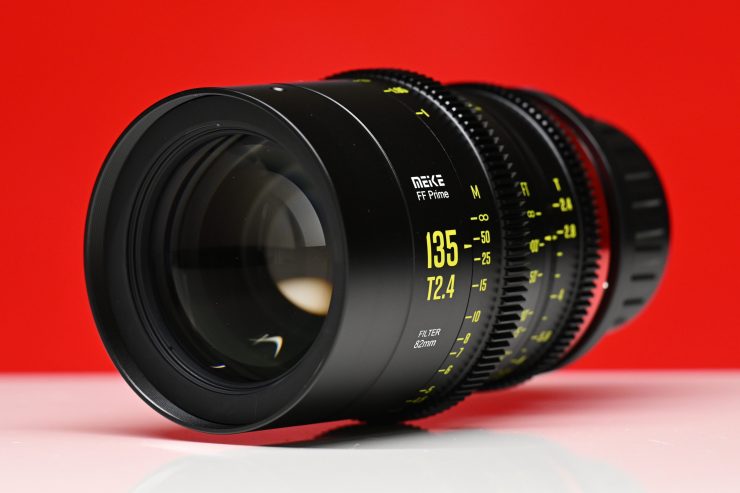
Just like all of the previous Meike offerings, the 135mm feels solidly made (especially for a lens at this price). One thing that has impressed me about the Meike lenses is their consistency when it comes to build quality. Every lens I have reviewed has been solidly made and they all have good mechanics.
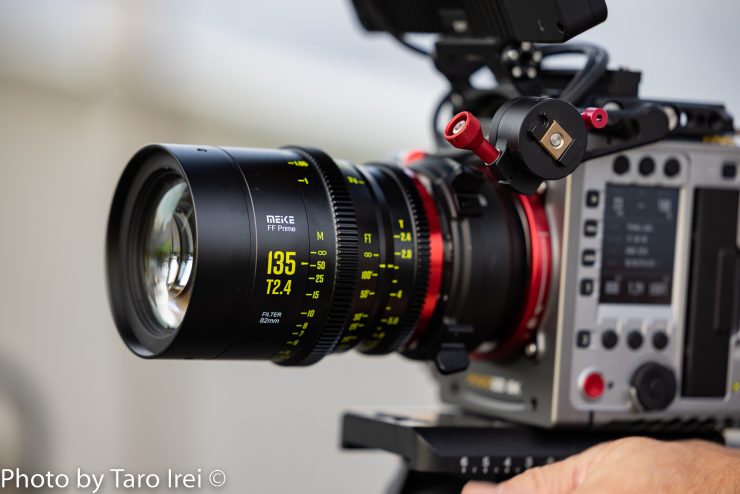
The focus and iris rings are nicely weighted. Their movement is nice and linear and the resistance doesn’t change as you are moving the rings.
Markings
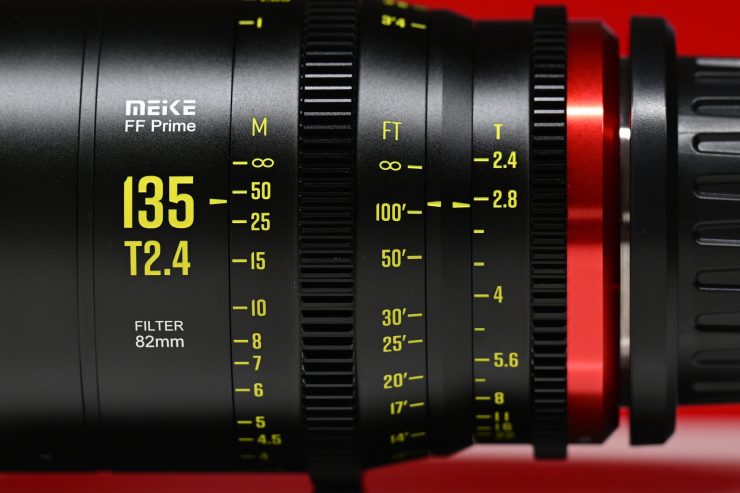
The markings on the lens are shown in both feet and meters, which although a little unusual, is quite common on more budget-priced cine lenses. I suppose this saves on making multiple versions and it helps to keep the cost down.
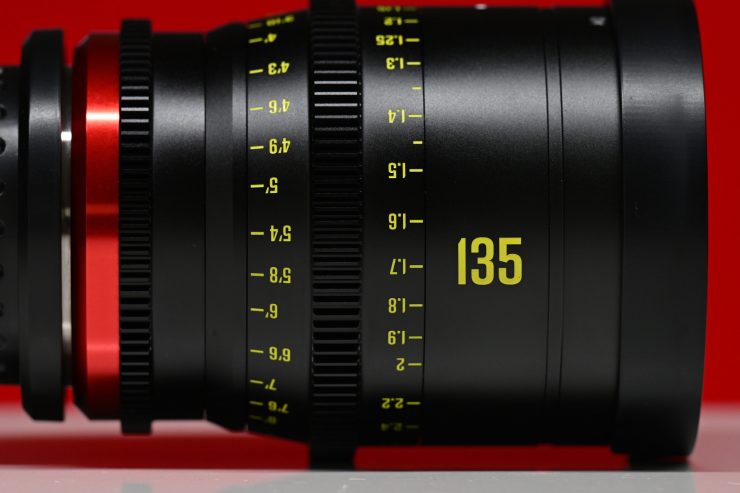
As this lens is very much being targeted at solo shooters and owner/operators you will notice that the markings will appear upside down on the non-operators side of the lens. I don’t personally see this as any kind of problem, but it is with mentioning, and something you need to be aware of.
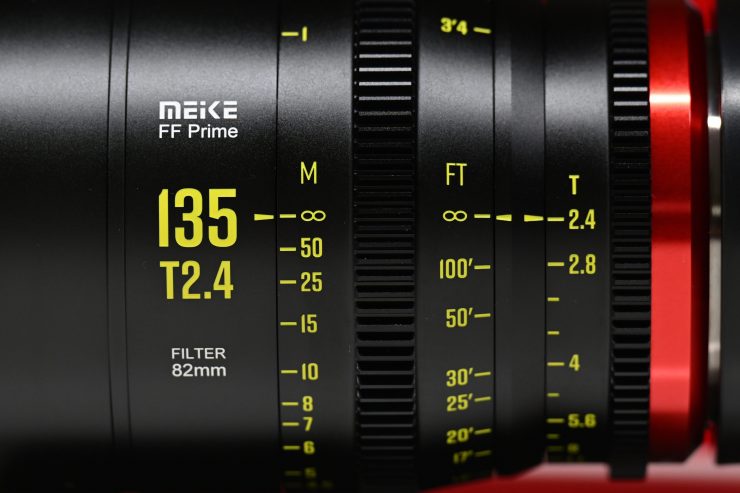

135mm 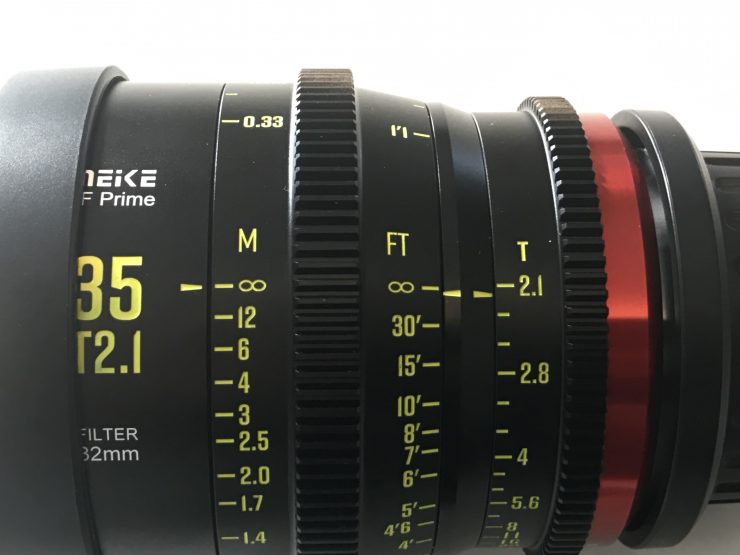
35mm
On the 135mm I did find that the infinity markings in both feet and meter scales did line up. I only mention this, because when I reviewed the 35mm T2.1 the infinity marking in meters and feet didn’t line up. With affordable cine lenses, it is often the case where the consistency of the quality control from lens to lens may vary. In saying that, all of the lenses from Meike I have reviewed have been solidly made and it was only the 35mm that had the markings issue.
Other Features
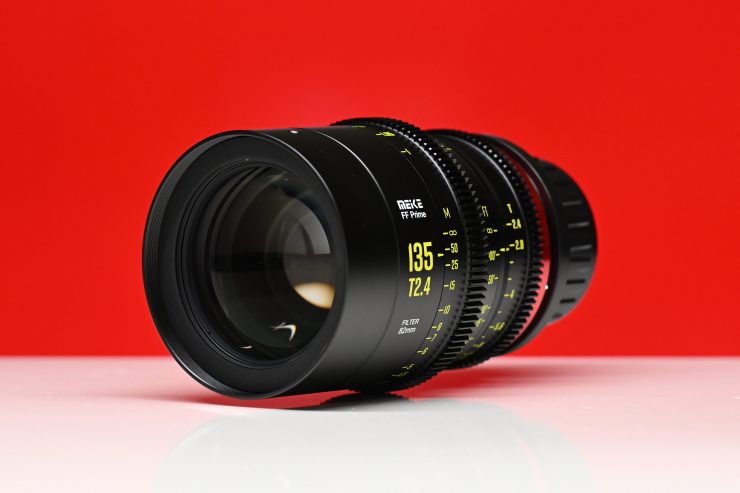
The lens has an 82mm front filter diameter so you can easily attach common-sized filters. This is a nice feature if you plan on using the lens with mirrorless hybrid or digital cinema cameras that don’t feature in-built ND. The front diameter of the lens is 85mm. This allows you to use some clamp-on matte boxes with the correct adaptor ring.
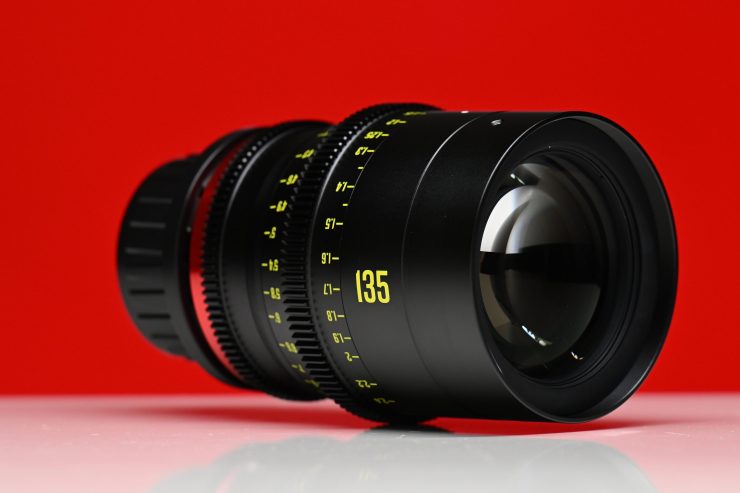
The minimum focusing distance is 100cm (3.28′). This is fairly decent for a lens with this focal length and the same as the 105mm T2.1.
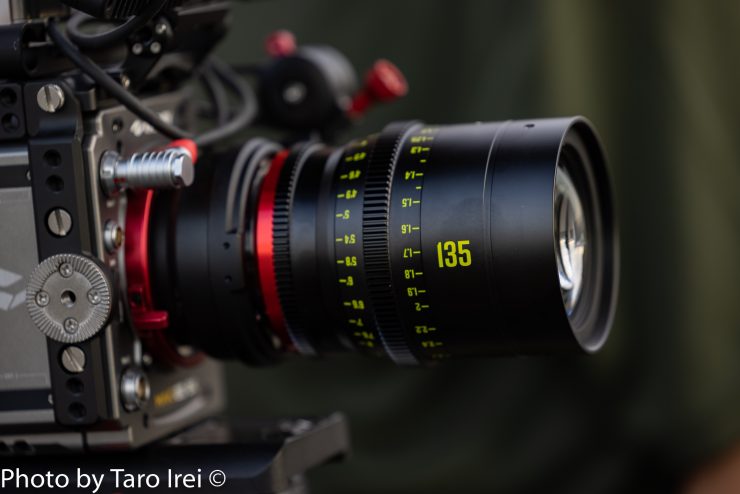
The lens has a focus throw of 330 Degrees and both the iris and focus ring feature industry-standard 0.8 pitch gears. It is possible to manually pull focus from infinity to the minimum focusing distance in one go, despite the large 330 degrees of rotation. This is mainly because the physical size of the lens barrel isn’t that big.
Is it actually a cine lens or just a rehoused stills lens?
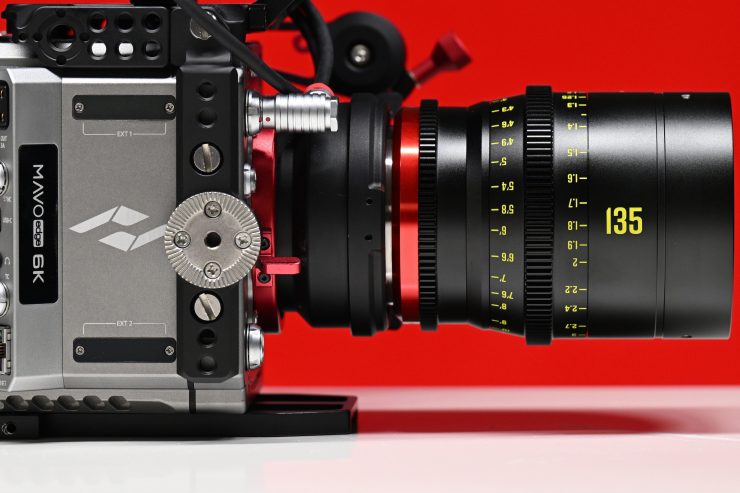
According to MEIKE, all of the lenses in this series feature a purpose-built cine design and they are not rehoused stills lenses. I keep mentioning this in every review because it is important to know what you are getting as a consumer.
Optical Structure
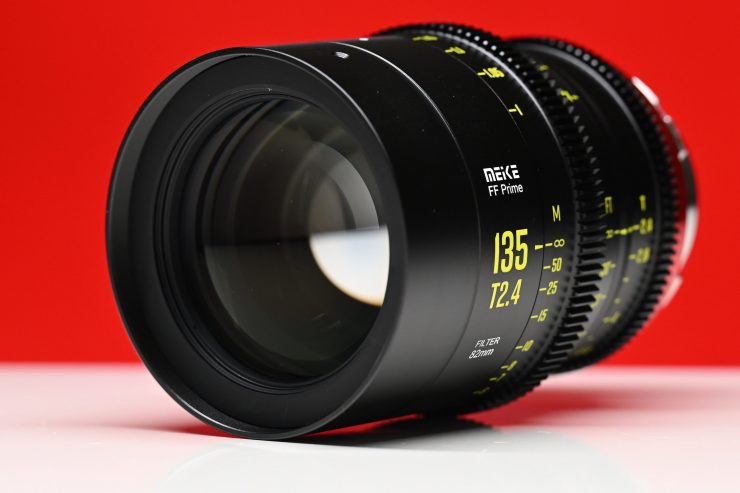
The optical design of the lens consists of 12 elements in 8 groups and there are 17 aperture blades
Sharpness
T2.4 is reasonably fast for a 135mm full-frame prime lens, so I was interested to see how sharp it was when used at various T stops, and especially how it performed when used wide open.
As you can see in my tests, sharpness does improve as you stop the lens down. This comes as no surprise as most lenses are generally sharper once they are stopped down, however, it is still nice and sharp when used wide open at T2.4. At T4 and T5.6 it is very sharp and this is probably the sweet spot for the lens.
Edge sharpness is still reasonably good, but it will get slightly softer out towards the edge of frame. Stopping the lens down to T4 or T5.6 does improve edge sharpness.
This is a sharp enough lens that you can certainly use it wide open. For a sub $1,100 USD full-frame cine lens the sharpness is very good.
All the tests were shot on the Kinefinty MAVO Edge 6K in 6016 x 3174 ProRes 4444.
Lens Flare
I actually think that the lens flare looks a little more interesting than on the other Meike focal lengths I have tested. Wide-open at T2.4 you can get some nice flares and there are no real signs of veiling or other weird effects. Even when stopped down to T5.6 the flare still looks pretty good. Please bear in mind that lens flare is very subjective.
The lens maintains a good amount of contrast even when a bright light source is coming directly down the barrel.
No Breathing?
I tested out the lens by doing large focus throws and for a lens at this price, the breathing is well controlled. There is a little bit of breathing, but nothing that overly concerned me.
No lens technically has zero breathing, but very good cinema glass has such minimal amounts that it is virtually impossible to see. What you will always see is some perspective shift which is normal when refocusing a lens.
Image shift is the change in location of a fixed point after a focus rack. It should be in the same spot after you rack focus.
Perspective shift is the focal length of the lens being modified by the movement of the optics. A slight change in focal length may happen if there is a floating element that moves and is not properly corrected for in the design. Certainly, the great majority of lenses have this issue. It’s also tenths of a mm so not overly noticeable.
Focus breathing is a change in image size so the size of object will get larger as it moves out of frame. That is reproduction size.
In summary,
Fall off and Vignetting
I didn’t notice any real noticeable fall-off or vignetting when using this lens on a Kinefinity MAVO Edge 6K, Panasonic S1H, or Nikon Z9.
Chromatic Aberration
The lens doesn’t have any real-world visible chromatic aberration. Even if you zoom in 300% when used at T2.4 it is hard to notice anything. On a chart, you can see a tiny amount, but it is not something you are going to encounter in the real world. The lack of chromatic aberration is nice to see, especially for a 135mm T2.4 at this price.
Bokeh

Nice bokeh is something you want if you are purchasing a prime lens. Despite only having a T2.4 maximum aperture, you can create some nice bokeh because the lens has 17 aperture blades. The bokeh produced is nice and round and you can create some beautiful out-of-focus areas by using the lens wide open. There is no onion ring effect inside the bokeh and there is almost no color bleed.
The bokeh is nice for a lens with a T2.4 aperture. It is nice and round and even when you stop the lens down it continues to stay round even at T8.
Color Tone
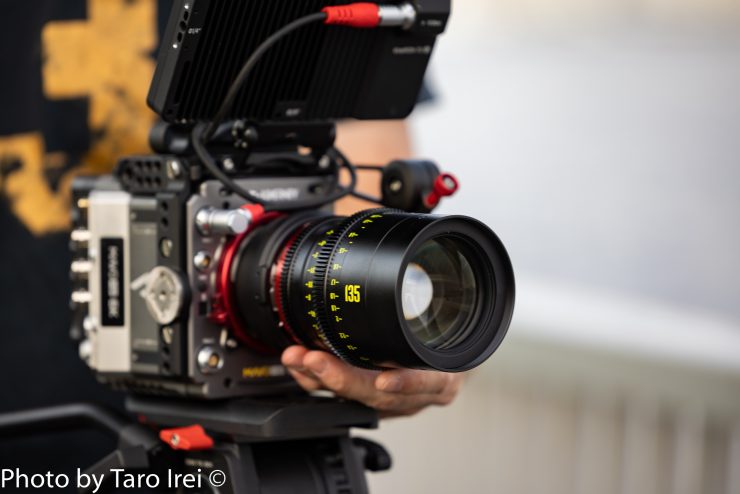
The lens is fairly neutral when it comes to color, if anything it is slightly cooler in tone. I would liken the color tone to a lot of Zeiss lenses.
The color tone of a lens is really something you should look at closely if you are going to be using both prime and zoom lenses from different manufacturers. Certain prime and zoom lenses work better together than others. What will work for you will also depend on what camera you are using.

I have always thought the Meike Cine primes are a good option if you are doing a lot of corporate work or broadcast because they produce a very clean look with no real CA. At least, in my opinion, you don’t want to shoot a corporate interview with a lens that has a vintage look with lots of CA, flare, veiling, etc.
Real World Thoughts
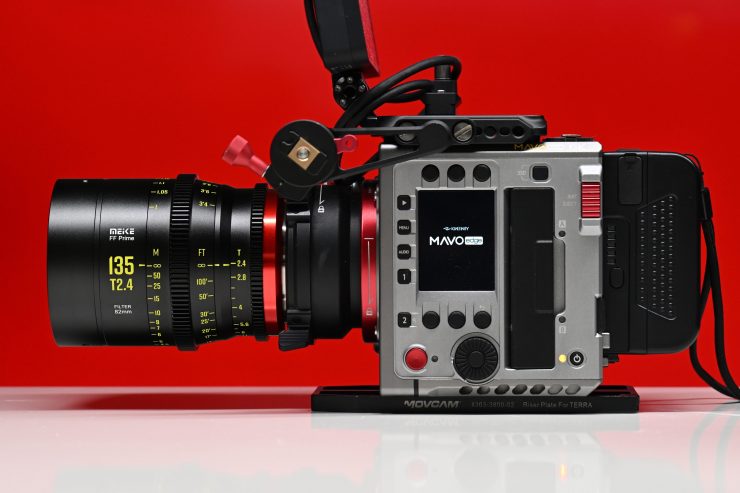
The Meike 135mm T2.4, just like the rest of the Full Frame Cine Lens series is an impressive offering, especially given its relatively low entry cost.
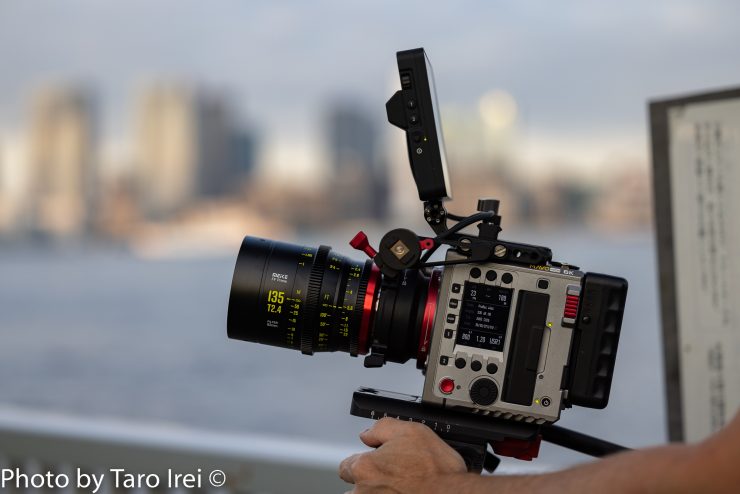
The lens isn’t going to look as good as more expensive offerings, but nonetheless, it is still impressive given its low entry price. It strikes a good balance of price and performance and you can build out quite a good set of lenses without having to spend a ton of money.
Above you can see a few example shots I got with the lens.
Despite only having a T2.4 maximum aperture, the lens is still capable of creating good separation from your background and the bokeh is pleasing.
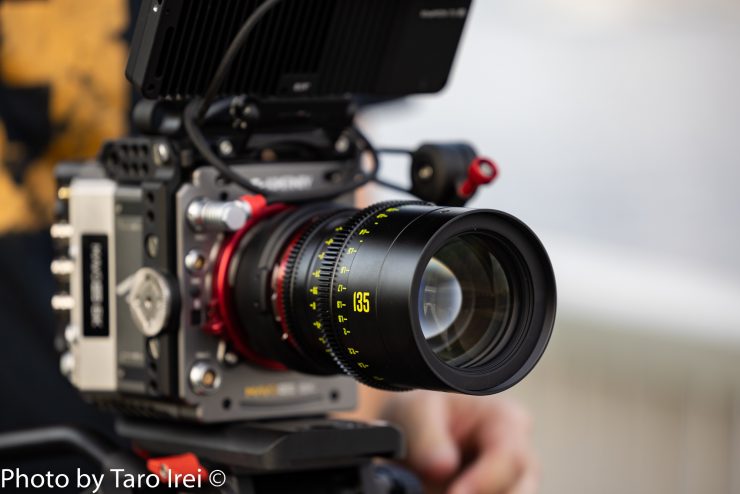
The build quality and mechanics are good, especially at this price point. The iris and focus are reasonably well-weighted, but they don’t seem to have even tension throughout their whole range.
With the industry pushing forward with larger-sized sensors, investing in full-frame and larger glass is a pretty solid investment. Regardless of whether you are using cameras with S35 sized, or full-frame sensors, investing in glass that can cover both is a good idea.
More Focal Lengths Coming?
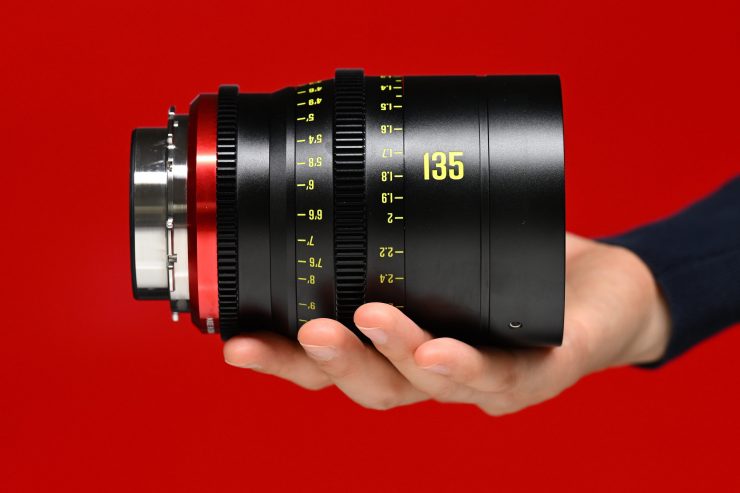
MEIKE has now officially released all 7 lenses that they said they would in the series.
- 16mm T2.4
- 24mm T2.1
- 35mm T2.1
- 50mm T2.1
- 85mm T2.1
- 105mm T2.1
- 135mm T2.4
I doubt we will see any more lenses in this particular series. I would like to perhaps see a macro added and it would also be nice if MEIKE branched out and made a few zooms to compliment the primes.
Price & Availability
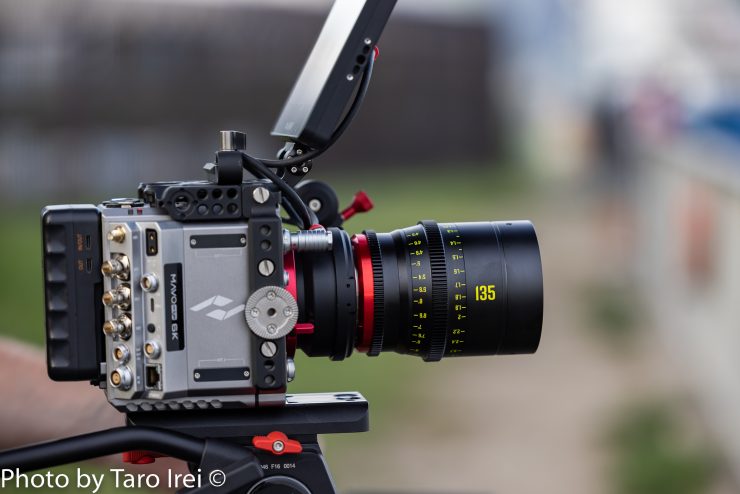
The Meike Prime 135mm T2.4 retails for $1,099 USD and it is now available to purchase.
Competition
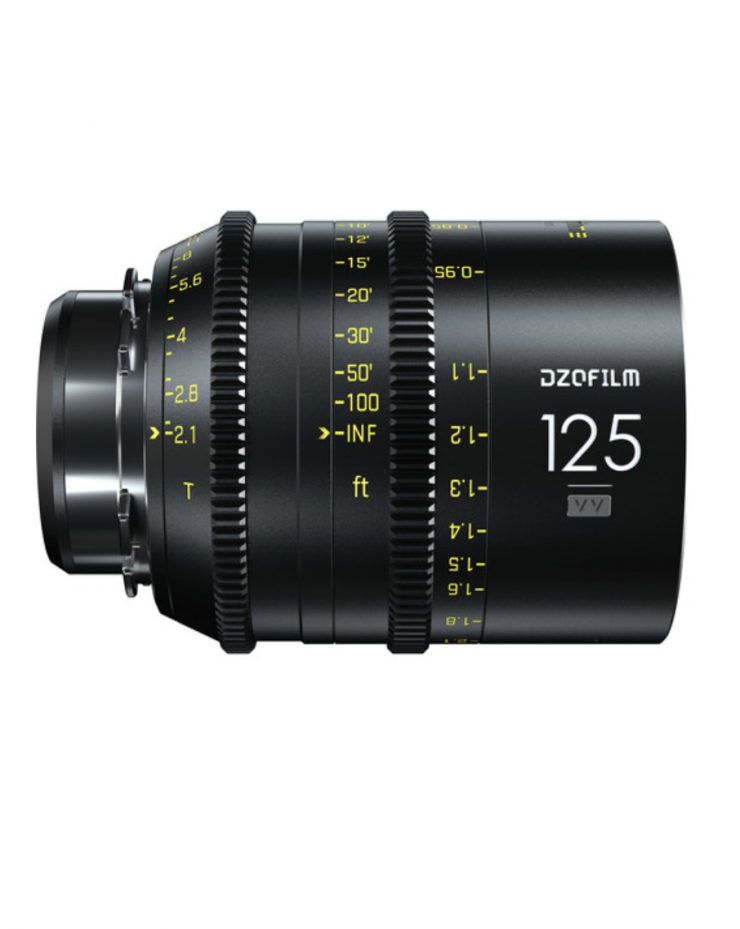
There is quite a lot of competition in the full-frame cinema prime marketplace, especially for lenses that come in either PL or EF mount. This makes choosing a cine prime lens a very difficult task.
As far as affordable Canon EF or PL mount cine prime options are concerned, the DZOFilm VESPID 125mm T2.1 would be the closest direct competition. The DZOFilm has a slightly faster T-stop, however, it costs around $300 USD more and its focal length is slightly shorter.
So how does the DZOFilm compare to the Meike when it comes to specifications and price?
| Meike 135mm T2.4 | DZOFilm VESPID 125mm T2.1 | |
| Lens Mount | PL/EF/RF/E/L | PL/EF |
| Image Circle | 45mm | 46.5mm |
| MFD | 3.28′ / 100cm | 2.59′ / 79cm |
| Iris Blades | 17 | 16 |
| Filter Thread | 82mm | 77mm |
| Focus Rotation | 330° | 270° |
| Weight | 2.65 lbs / 1.2 kg | 2.02 lbs / 924 g |
| Price | $1,099 USD | $1,399 USD |
As you can see, both lenses have fairly similar specifications. The DZOFilm is lighter and has a better minimum focus distance. The Meike has a larger focus rotation, it is available in more mounts, and it is cheaper.
Optically I have no idea how these lenses compare as I have not had a chance to try out any of the DZOFilm VESPID primes.
Do you need a full-frame cinema lens?
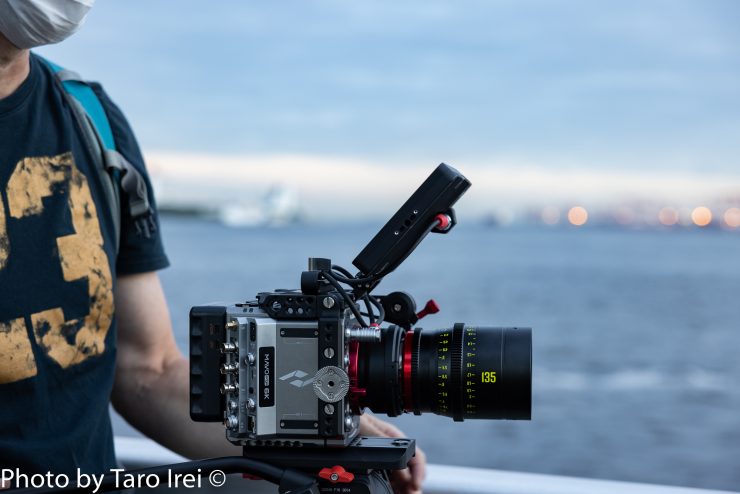
With lots of relatively affordable full-frame digital cinema cameras such as the Canon C500 Mark III, Sony FX9, Sony FX6, Kinefinity MAVO LF/ MAVO Edge 6K/8K, and the Z CAM E2-F6 Full-Frame 6K and 8K now available, as well as a plethora of full-frame mirrorless cameras, buying full-frame lenses makes a lot of sense.
You can always use full-frame lenses on S35 sensor-sized cameras and even if you don’t currently own a full-frame camera, investing in glass that covers larger-sized sensors is a solid long-term option. Full frame cine lenses used to be quite expensive, but you can now buy options for less than $1,000 USD. With these more budget-conscious options, it really doesn’t make a lot of sense to go with a S35 lens over a full-frame lens given the price difference is only a few hundred dollars.
There is certainly a push by manufacturers to bring out full-frame and larger digital cinema cameras, so lenses that cover full-frame and larger sensors have already become more popular. In saying that, we have seen both ARRI and RED recently announce S35 cameras.
I don’t generally shoot on a full-frame digital cinema camera, but I have still personally chosen to invest in full-frame prime lenses. I did this because the industry is moving quickly and I would prefer to spend my money on something that is going to be slightly more future-proof than a lens that just covers an S35 sensor.
Investing in a full-frame lens is usually going to cost you a lot more money than buying one that just covers S35 sensors, however, some of the latest lens offerings from Meike and DZOFilm are starting to buck that trend.
Conclusion
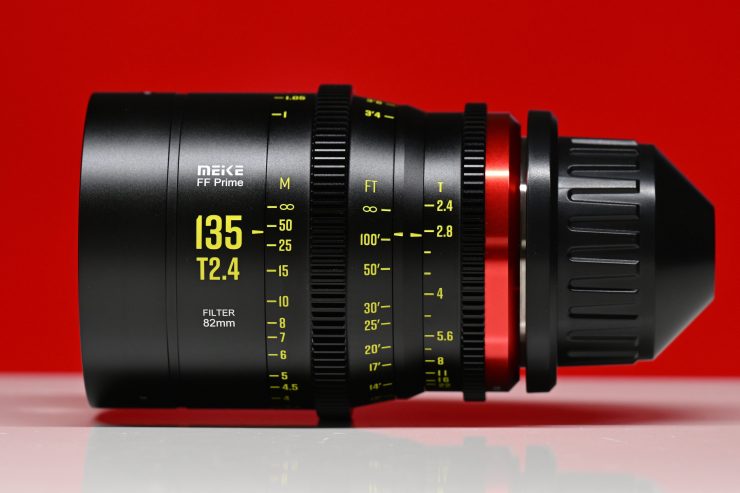
Like all the other lenses in the series, the Meike 135mm T2.4 Full Frame Cine Lens is a solid offering that is optically good and well made.
It offers good performance in a relatively compact and affordable package. The reason this lens is less than $1,100 USD is that it is only T2.4. You usually can’t have your cake and eat it too. If you wanted a faster lens and better optical performance then that usually comes at a cost. In saying that, T2.4 is still fairly fast for a 135mm full-frame lens.
The lens doesn’t have a ton of character, instead, it offers a fairly clean look without much chromatic aberration and a good amount of sharpness.
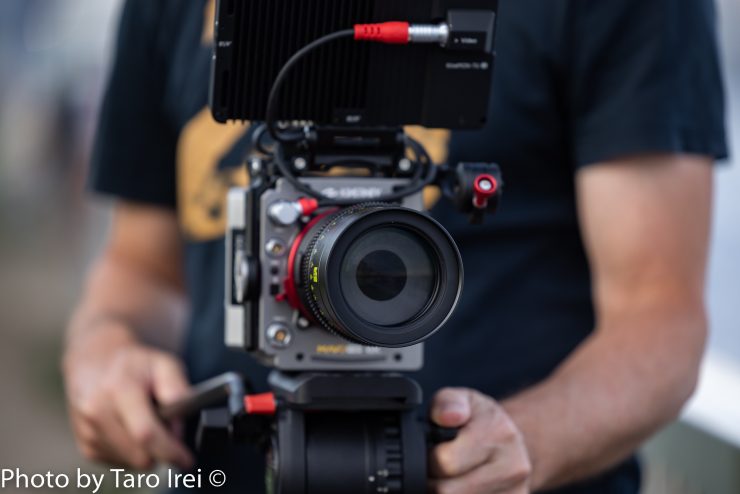
The mechanics and build quality are very good for a sub $1,100 USD lens. The 330 degrees of focus rotation allows you to make finite focus adjustments without the associated problems of using stills glass. The barrel is significantly small enough that you can pull focus from infinity to the minimum focus distance by hand, but this does require a bit of effort.
Having an 82mm front filter thread allows you to use common-sized filters which is important if you plan on using this lens on mirrorless, DSLR, or small-sized digital cinema cameras that don’t have built-in ND. The 85mm front lens diameter means you can also use clamp-on matte boxes with the appropriately sized step-down ring.
Meike has done a really good job with their full-frame lens series, however, they face stiff competition from companies such as DZOFilm. If you want back 3-4 years people would have thought you were crazy if you had of told them you could buy purpose-made full-frame cine primes which offered good optical performance for under $1,100 USD.
As far as price v’s performance is concerned, the Meike lenses are very hard to beat if you are looking for an affordable purpose-made cine lens that covers full-frame and larger sensors that won’t empty your wallet.
Like what we do and want to support Newsshooter? Consider becoming a Patreon supporter and help us to continue being the best source of news and reviews for professional tools for the independent filmmaker.

